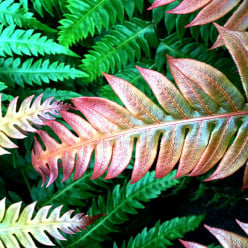What is life?
What are the components of a living organism compared to a nonliving one? Is there any specific thing(or things) that a thing must have in order to be considered living?
Self-movement
Self-replication
Born-Growth-Reproduction-Death cycle (does a thing HAVE to die?)
URGE to reproduce and survive (instincts)
Is there a "spark of life" or is that not something that's necessary?
How about crystals? Are they alive?
"But what is to say that a crystal does not do all of these things? That crystals grow, and sometimes parts of them break off and become new growing crystals suggest that they not only gain sustenance from the earth for growth, but can reproduce. That they do this while in their natural environment in the earth suggests that they surely interact with their surroundings." http://perdurabo10.tripod.com/storagej/id72.html
(This article is unscientific, I will try to find something else more credible on crystals)1.Homeostasis: Regulation of the internal environment to maintain a constant state; for example, electrolyte concentration or sweating to reduce temperature.
2.Organization: Being structurally composed of one or more cells — the basic units of life.
3.Metabolism: Transformation of energy by converting chemicals and energy into cellular components (anabolism) and decomposing organic matter (catabolism). Living things require energy to maintain internal organization (homeostasis) and to produce the other phenomena associated with life.
4.Growth: Maintenance of a higher rate of anabolism than catabolism. A growing organism increases in size in all of its parts, rather than simply accumulating matter.
5.Adaptation: The ability to change over time in response to the environment. This ability is fundamental to the process of evolution and is determined by the organism's heredity, diet, and external factors.
6.Response to stimuli: A response can take many forms, from the contraction of a unicellular organism to external chemicals, to complex reactions involving all the senses of multicellular organisms. A response is often expressed by motion; for example, the leaves of a plant turning toward the sun (phototropism), and chemotaxis.
7.Reproduction: The ability to produce new individual organisms, either asexually from a single parent organism, or sexually from two parent organisms.
wikipediaI'm going to list things that non-living things can do in relation to these things, to see if there are any that solely involve living things.
1.Homeostasis: Regulation of the internal environment to maintain a constant state; for example, electrolyte concentration or sweating to reduce temperature.
A well designed house, a termite hill, a beehive, anthill
2.Organization: Being structurally composed of one or more cells — the basic units of life.
A beehive(does it have to have a neucleus? DNA?
3.Metabolism: Transformation of energy by converting chemicals and energy into cellular components (anabolism) and decomposing organic matter (catabolism). Living things require energy to maintain internal organization (homeostasis) and to produce the other phenomena associated with life.
?
4.Growth: Maintenance of a higher rate of anabolism than catabolism. A growing organism increases in size in all of its parts, rather than simply accumulating matter.
Crystals, sediment layer
5.Adaptation: The ability to change over time in response to the environment. This ability is fundamental to the process of evolution and is determined by the organism's heredity, diet, and external factors.
A mountain, a river
6.Response to stimuli: A response can take many forms, from the contraction of a unicellular organism to external chemicals, to complex reactions involving all the senses of multicellular organisms. A response is often expressed by motion; for example, the leaves of a plant turning toward the sun (phototropism), and chemotaxis.
iron to a magnetic source
7.Reproduction: The ability to produce new individual organisms, either asexually from a single parent organism, or sexually from two parent organisms.
crystalStimulus is what scientists try to observe. I think amoebas are stimulated to follow light….
I don't know anything about amoebas. I assume they have dna, they eat, defacate, reproduce, die. They must get hungry, or they wouldn't eat. Why do they do that, if they don't have a brain(which is what supposedly our "instincts" are, chemical reactions in the brain. )
One time you said we need to learn what the laws of nature are. Apparently there was a movement to throw us off the track of knowing the laws of nature… as though there weren't any. I believe nature has laws and that we do need to become conscious of them. What are you trying to discover? Thomas Aquinas wrote of the laws of nature. Have you read anything by him?
We do need to learnt he laws of nature. I think we will someday. It won't be by me probably though, I won't go near that rabbit hole anymore.
I only have one contribution to society. A small math trick that probably serves no purpose anyway, and I don't know enough math to turn it into a formula.
A prokaryote (a form of bacteria) is the simplist form of life. It is basically a shell for it's own dna. But it is alive, it functions as a living being. It socializes, forms communities, and communicates with others of it's species. It has no brain. No nerves. Can it feel things? Does it have instincts? What makes it "want" to reproduce or eat? Does it want to? And if not, then why does it do those things at all?
Did DNA form first, and then somehow made protection around itself (the cell?)
This covers the evolution of various cell structures from the primordial soup.
http://www.ncbi.nlm.nih.gov/books/NBK9841/
and more about the earliest self-replicating molecules
http://evolution.berkeley.edu/evosite/e … igin.shtml
DNA hasn't changed since life began (so they say, although I have no idea how they could know that.)
A tough question, and one I can't answer and can't point to anyone that can.
About all I CAN say is that death is not a part of life - any organism that reproduces by twinning itself (an amoeba) may live forever. If one of them dies, was it the original or a twin?Plus there are trees that live for thousands of years. And animals that don't reproduce, although they are obviously alive (like a mule).
One must wonder as well - will we one day create machine life? Life, without organic cells? We already create computers/machines that reproduce themselves, making more computers/machines...
But, we must remember, humans are not automatons and robots/machines will never love.
Related Discussions
- 63
Cosmology and Psychology- Arguments for God's existence
by Alexander A. Villarasa 10 years ago
Multiple arguments have been presented in various forums (inside and outside of HubPages) to argue for the existence of God. They run the gamut from the Cosmological ( Efficient Causality, Contingency, Design, Ontology, Kalam) to the Psychological (Moral, consciousness, conscience,...
- 27
HUMAN CHARACTER QUESTIONED
by qwark 15 years ago
The environment within which an organism grows and maturates, determines its basic character.Only one "unique" organism inhabiting this planet, can intellectualize. That organism is, of course, man.Man can when motivated, willfully modify his basic "character." No other life...
- 29
Is it Moral To Reproduce?
by Sooner28 12 years ago
This is solely for an intellectual exercise, and to get people thinking. I'm not making any judgments one way or the other. I also think I am going to write a hub about this eventually.The first claim I'm going to defend is that almost every parent is directly responsible for the death...
- 28
Evolution and the flu
by Rad Man 13 years ago
Is the changing of the flu every year evidence for evolution?
- 13
Am I morally obligated to reproduce?
by Luke M. Simmons 10 years ago
Am I morally obligated to reproduce?Are you morally obligated to produce offspring just because your ancestors have done so since the beginning of life on Earth? Evolutionarily speaking, the only reason you were created was to perpetuate the genes passed down to you throughout the eons. Ceasing...
- 88
God as Collective Consciousness
by maestrowhit 16 years ago
Without delving into a lot of deep studying on the origins of words, I'll make a suggestion. Could it be that Jesus was redefining what God is when He called Himself the Son of Man?THink about it: He often referred to God as His Father, right? And then He refers to Himself as the Son of Man....









